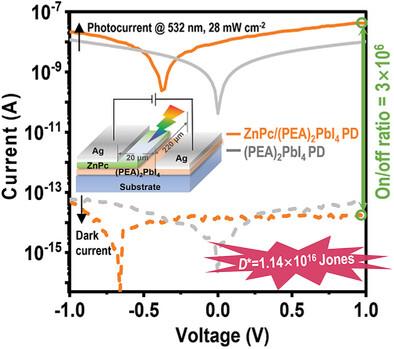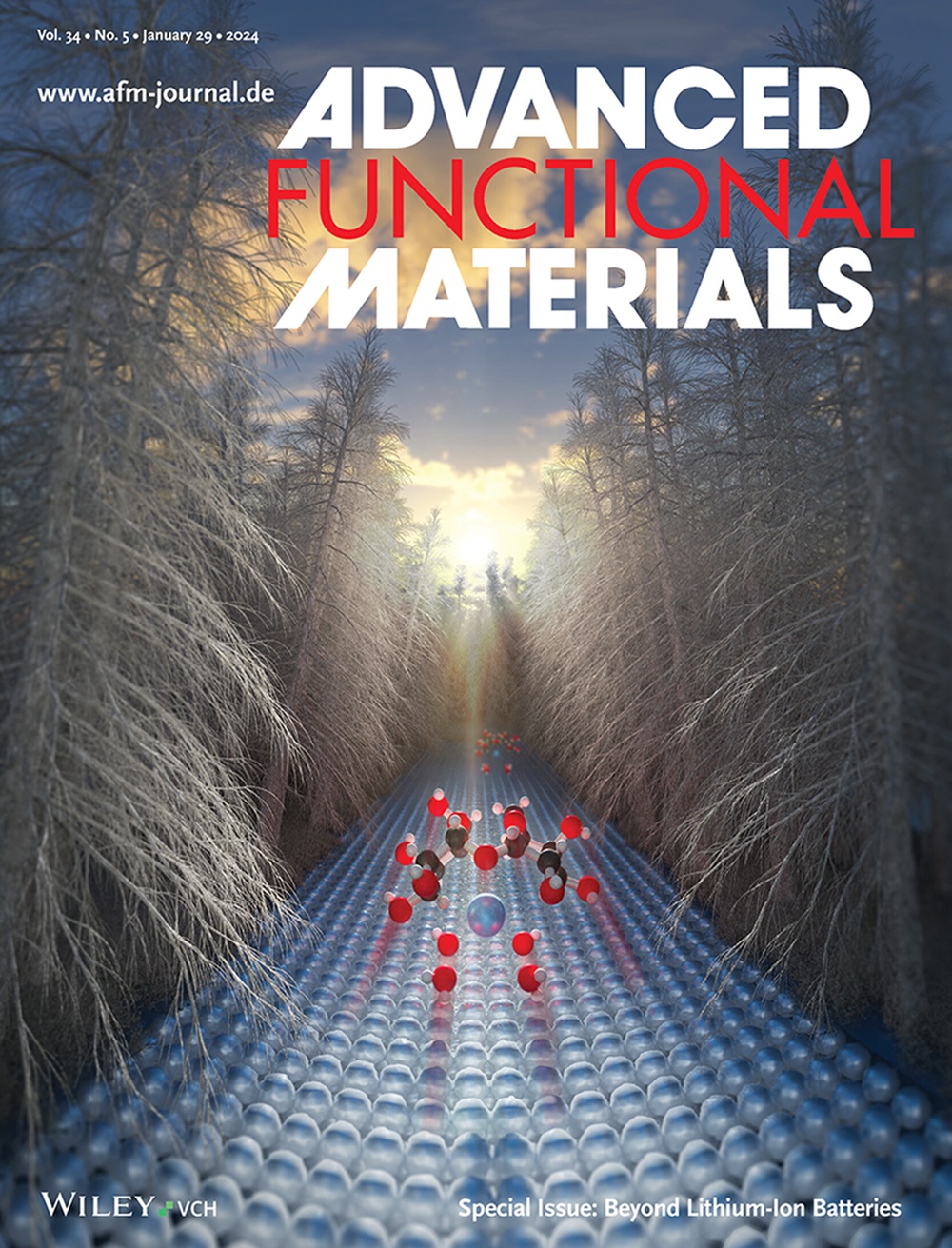2D Perovskite/Organic Heterojunction Black-Light Level Photodetector with Record-High Detectivity
IF 18.5
1区 材料科学
Q1 CHEMISTRY, MULTIDISCIPLINARY
引用次数: 0
Abstract
2D single-crystal perovskites have attracted interest due to their excellent photoelectric properties and improved moisture stability, making them promising for various optoelectronic applications. However, challenges remain, particularly low carrier collection efficiency caused by high exciton binding energy. This study introduces self-powered heterojunction photodetectors (PDs) based on (PEA)2PbI4/ZnPc, enhancing carrier conduction by the configuration of lateral electrodes and regulating carrier/exciton dynamics via the heterojunction design. The PD achieves an impressive detectivity of 1.14 × 1016 Jones, a 770% increase compared to the control, with a detection limit reaching the black-light level of 3 pW cm−2 under 532 nm at 1 V bias. This performance surpasses all previously reported 2D perovskite PDs and is attributed to suppressed dark current and increased photocurrent. The built-in electric field at the heterojunction counteracts part of the forward bias, reducing intrinsic carrier motion in (PEA)2PbI4 in the dark. It also effectively dissociates photogenerated excitons, minimizing radiative recombination under illumination. This allows the device to detect weak light at the black-light level in self-driven mode. Additionally, the heterojunction device extends the detectable wavelength to 980 nm. This PD has been successfully applied in acousto-optic conversion communication, highlighting its potential for low-power, energy-efficient optical communication solutions.

求助全文
约1分钟内获得全文
求助全文
来源期刊

Advanced Functional Materials
工程技术-材料科学:综合
CiteScore
29.50
自引率
4.20%
发文量
2086
审稿时长
2.1 months
期刊介绍:
Firmly established as a top-tier materials science journal, Advanced Functional Materials reports breakthrough research in all aspects of materials science, including nanotechnology, chemistry, physics, and biology every week.
Advanced Functional Materials is known for its rapid and fair peer review, quality content, and high impact, making it the first choice of the international materials science community.
 求助内容:
求助内容: 应助结果提醒方式:
应助结果提醒方式:


